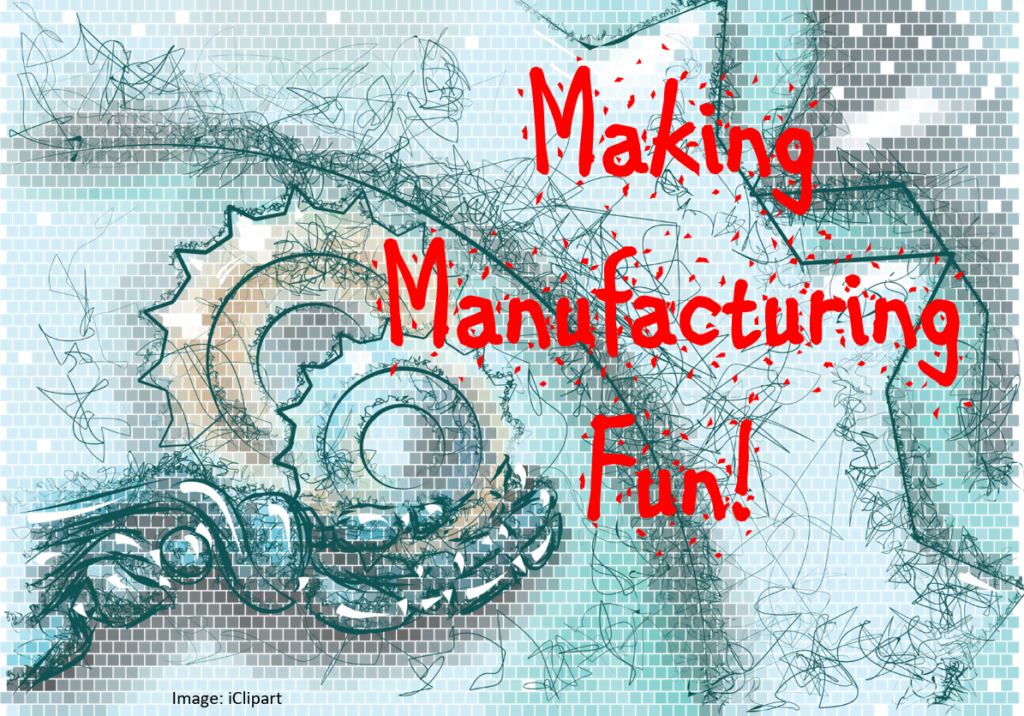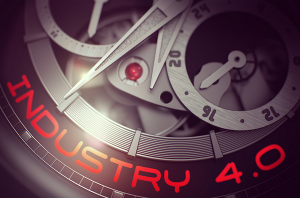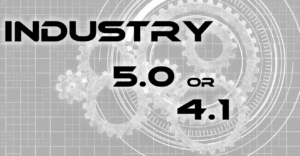Most people have heard the term Industry 4.0 which refers to the next industrial revolution. The revolution is being triggered by technologies like artificial intelligence (AI), robotics, the Industrial Internet of Things (IIoT), and additive manufacturing (aka 3D printing). Industry 4.0 is predicted to make manufacturing more efficient and effective and to eliminate many manufacturing jobs. According to Joe Atikian (@joe_atikian), author of Industrial Shift: The Structure of the New World Economy, automation is speeding ahead because finding employees (both now and in the future) is problematic. He explains, “Virtually no kids or young adults want to work in a factory or even know what a factory is. They don’t tend to make or fix things with their hands, much as a 1960s factory worker deliberately knew nothing about growing wheat. Instead, today’s youngsters are computer coders. They want to write apps for smartphones and dream of making a fortune in a startup.”[1] The situation is ironic since Industry 4.0 is more about coding and other advanced technologies than many of the fields to which young people are drawn.
Artificial Intelligence and Manufacturing
For many people, manufacturing conjures up images of dirty factory floors and backbreaking work. While that may have been true for your grandfather, it’s much less true today and will be even less true in the future. The two primary reasons for that are artificial intelligence and robotics. Despite the potential for AI and robotics taking over human jobs, an increasing number of people have a positive view of AI. When Darrell M. West (@darrwest), vice president of Governance Studies and director of the Center for Technology Innovation at the Brookings Institution, polled 1,535 adult Internet users, he found, “14 percent [of those surveyed] were very positive about AI, 27 percent were somewhat positive, 23 percent were not very positive, and 36 didn’t know or gave no answer. There were differences based on gender with men (18 percent) being more positive compared to women (10 percent). Older people were slightly less positive about AI than young adults.”[2] Why is this important? John Hitch (@JPHitch) asserts, “Artificial intelligence is positioning itself as the transformative technology of the century. The speed at which it is improving manufacturing operations leaves the industry with two options: Embrace the machines or get left behind.”[3] He adds, “The dawn is just breaking in this fourth industrial revolution. … Manufacturing CEOs will need to harness the power of AI to get there.”
Harnessing the power of AI includes applying its capabilities to robotics. Jason Bellini (@jasonbellini) and Matt McDonald, note, “Some economists are saying that the world is entering a ‘second machine age.’ Artificial intelligence and other advancements are enabling robots to perform tasks that, until recently, only human eyes, hands and minds could handle.”[4] Although automation will inevitably lead to some job losses, other jobs will either transformed or created. If Atikian is correct and young people are going to eschew manufacturing jobs, manufacturers must find ways to change young peoples’ minds. They must make manufacturing fun for future generations of workers.
Attracting Workers to and Preparing Them for Industry 4.0
In another article, Hitch suggests one way to attract a new generation of factory worker is through gamification. He explains, “In the next few years, as more workers don industrial smartglasses and as brightly colored cobots dot work cells, factory floors will more closely resemble giant arcades than the grungy, rugged workplaces of the past.”[5] Coming generations of workers will have been gamers all their lives and will understand the importance (and fun) of setting and beating goals. Hitch believes manufacturers can make their workplaces attractive to such people. He explains, “Controlling the variables in real time, speeding up a production line by adding an extra body, for example, can yield what any kid with a pocketful of quarters aims for in an arcade: a new high score. And it’s all being driven by the data.” And, if Atikian is correct when he asserts most youngsters are computer coders, they should be attracted to working with data.
Leo Craig (@leo_craig), General Manager for Riello UPS, describes how the modern factory is data driven. He writes, “The factory floor is home to hundreds of machines, from industrial plant and production lines, through to air conditioning units and the vital uninterruptible power supply (UPS) systems keeping the electricity flowing. Each of these devices is fitted with countless sensors that produce priceless data and enable them to interact with each other. Combine this constant flow of data with intelligent, real-time analysis and insight, and the outcome is obvious. Reduced processing flaws, improved production quality, enhanced efficiency, optimized supply chains, better maintenance — working smarter offers some serious time and money savings.”[6] From Hitch’s perspective, each of these systems is another game to be conquered.
While much of the focus is on a future workforce, Scott Erker, Senior Vice President of U.S. Operations at DDI, believes today’s workers can also be groomed to take their place in a smart factory. To do this, he suggests four traditional approaches to workforce development must be transformed.[7] Those processes are:
1. Transform product first, people second approach to building change champions. “Implementing change in the world of Industry 4.0 depends first on getting employees to embrace the changes. That process starts by developing ‘change champions’ who are ready to embrace innovation and have the ability to influence others in their networks to adopt transformation.”
2. Transform employee engagement from a non-essential capability to a critical skill. “Traditionally, decision-making in manufacturing was made from the top down, with lower-level workers awaiting instructions from their managers. … As manufacturers are increasingly driving toward lean, high-technology environments, it’s critical to have a highly engaged workers who take ownership over their work and can quickly solve problems.”
3. Transform the traditional “hire for skills and experience” approach to a “hire for learning potential” approach. “The common-sense approach to recruitment in manufacturing is to hire people who have the experience and skills to meet the demands of the job. In the environment of Industry 4.0, however, the pace of change has accelerated, quickly making skills and experience irrelevant. Instead, personality is proving to be much more relevant on the job. … Focus less on skills and experience, and instead look for individuals who demonstrate strength in agility, continuous learning, interpersonal communication, and proactive problem-solving skills. Manufacturers should start by looking for these skills within their existing workforce.”
4. Transform learning to be a leader by trial and error to creating purposeful learning journeys. “A purposeful learning journey combining face-to-face learning with online learning that helps hone on-the-job-skills can help manufacturers achieve more consistency in their leadership. This learning should be spread out over a specific time frame to avoid overwhelming participants.”
Summary
Industry 4.0 offers employees a high-tech environment in which they can learn, grow, and adapt. The Industry 4.0 work environment promotes employee satisfaction because it favors employees eager to solve problems. Work remains both interesting and fun. Former IBM executive Irving Wladawsky-Berger observes, “Technology will help an employee better solve problems across three key dimensions: decision context, execution support, and human-managed machines.”[8] Hitch concludes, “This is the new world of manufacturing ‘game theory’ — pulling together the combined powers of big data, analytics, the IIoT, smart tools and the workforce’s natural competitive instincts to drive more efficiency and productivity across the enterprise.”
Footnotes
[1] Joe Atikian, “Robots, AI, and jobs: All three are coming,” The Globe and Mail, 13 May 2018.
[2] Darrell M. West, “Brookings survey finds worries over AI impact on jobs and personal privacy, concern U.S. will fall behind China,” The Brookings Institution, 21 May 2018.
[3] John Hitch, “Adopt or Die: AI Leaves Manufacturing No Choice,” IndustryWeek, 22 March 2018.
[4] Jason Bellini and Matt McDonald, “The New Robot Revolution in Manufacturing,” The Wall Street Journal, 1 February 2018.
[5] John Hitch, “Gaming the Factory: Can Data Make Manufacturing Fun Again?” IndustryWeek, 7 June 2018.
[6] Leo Craig, “How data will build the factories of the future,” The Stack, 14 May 2018.
[7] Scott Erker, “4 Ways to Transform Your People Strategy for Industry 4.0,” IndustryWeek, 30 May 2018.
[8] Irving Wladawsky-Berger, “Human-Machine Work Teams: The Promise and Today’s Reality,” The Wall Street Journal, 25 may 2018.





